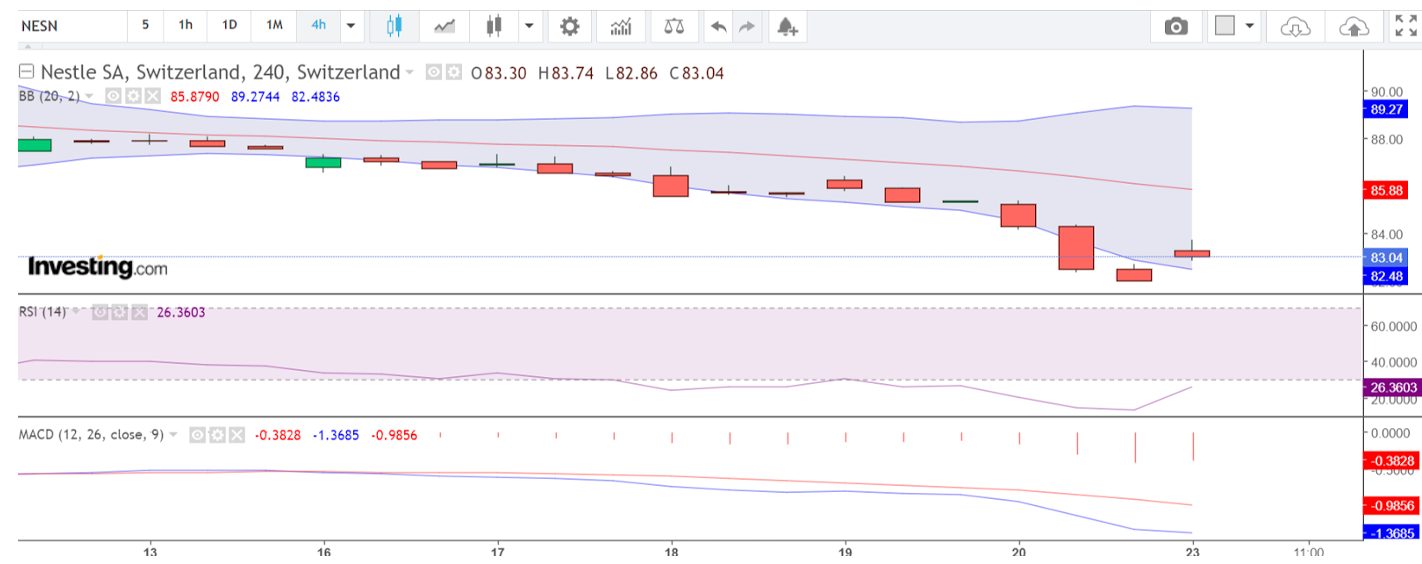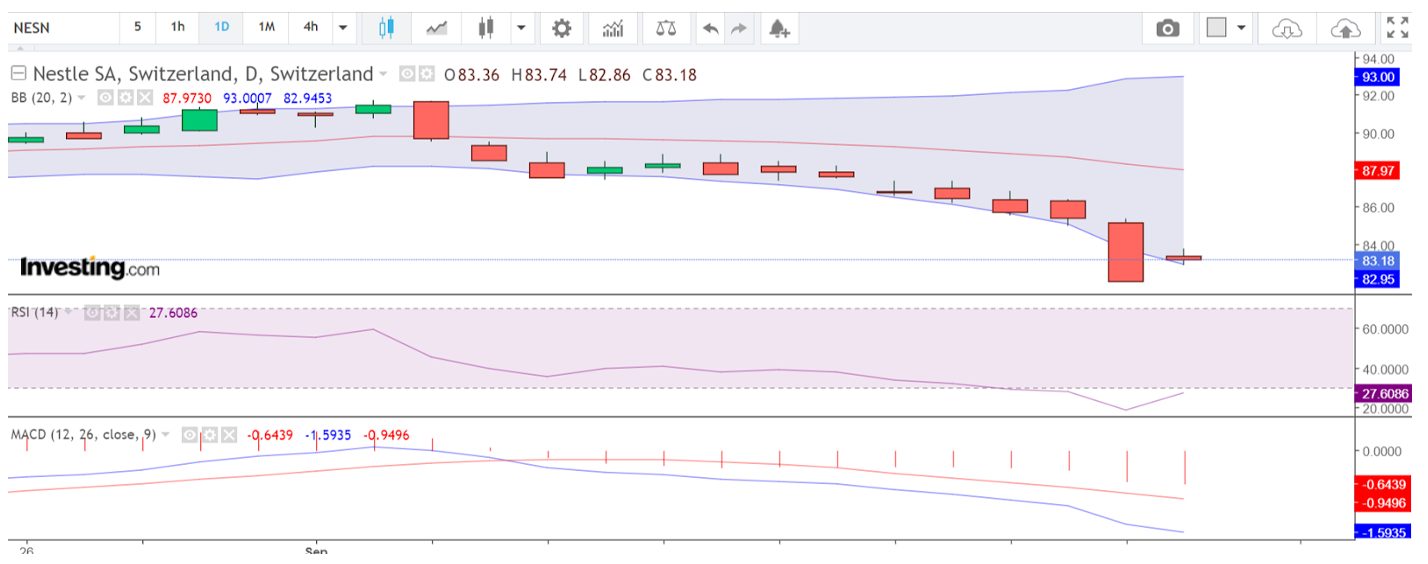CFD Trading in Switzerland



Contracts for difference, or CFDs, allow you to speculate on both rising and falling prices across Swiss and global financial markets with affordable minimum investments.
In Switzerland, more individuals are exploring CFD trading, particularly in speculative assets like cryptocurrencies and tech stocks, encouraged by the country’s excellent reputation as a well-regulated and secure financial hub.
Ready to start CFD trading in Switzerland? This beginner’s guide will help you master the essentials.
Quick Introduction
- CFD trading allows you to profit from rising and falling markets by going long (buying) or short (selling) on an underlying asset, such as shares in Zurich Insurance Group.
- You can trade on margin; controlling larger positions with a small deposit. This necessitates strict risk management with careful position sizing and the use of tools like stop-loss orders.
- CFDs let you trade various markets, such as Swiss stocks, indices like the Swiss Market Index, forex pairs like USD/CHF, and metals given Switzerland is a key hub for gold trading.
- CFD trading is regulated by the Swiss Financial Market Supervisory Authority (FINMA), with strict rules in place to help maintain consumer protection and market stability.
Best CFD Brokers in Switzerland
Based on our experts' tests and analysis, these 4 brokers offer the best CFD trading conditions for Swiss traders:
How CFD Trading Works
CFDs are a derivative. This means you don’t own the underlying asset – you simply speculate whether the price of an asset will rise or fall.
What attracts many traders to the product is the use of leverage. For a small outlay, known as margin, you can magnify your trading results (profit and loss).
Let’s say you believe the Swiss Market Index (SMI) will rise. You open a CFD buy position for 10 contracts at CHF 11,000 per contract. The margin requirement is 5%, so you need CHF 5,500 to open the trade.
If the SMI rises to CHF 11,200, you close the position. The price difference is CHF 200 per contract, giving you a profit of CHF 2,000 (10 contracts x CHF 200), minus any fees.
However, if the SMI falls to CHF 10,800, you would incur a loss of CHF 2,000.
Is CFD Trading Legal In Switzerland?
CFD trading in Switzerland is legal and supervised by the Swiss Financial Market Supervisory Authority (FINMA).
FINMA is a ‘green tier’ financial body under DayTrading.com’s Regulation & Trust Rating – offering robust safeguards for retail investors:
- Providers should be licensed by FINMA or reputable international regulators to offer CFD trading in Switzerland.
- Providers must adhere to anti-money laundering rules, capital requirements, and strict reporting standards.
- Providers must be transparent about trading conditions, fees, and risks, including real-time market information, risk management tools, and transparent pricing models.
FINMA is more flexible when it comes to leverage offerings as it’s not bound by Europe’s MiFID regulations. As a result, some Swiss firms, such as Dukascopy, offer much higher leverage (1:100+) than you generally find at EU-regulated platforms (1:30).
Is CFD Trading Taxed In Switzerland?
In Switzerland, CFD trading profits are generally not taxed for individual traders.
However, if most of your income comes from trading, the authorities may classify you as a professional trader. Professional traders are typically taxed on net income, meaning profits and losses are considered when calculating the taxable amount.
Switzerland imposes a wealth tax based on the total value of your net assets, including your trading account balance. The canton (regional government) levies this tax, and the rates vary depending on where you live.
In general, stamp duty is not applied to CFD trades because CFDs are derivative contracts rather than the direct purchase or sale of shares. This gives CFDs a tax advantage over directly trading stocks in some situations.Losses from CFD trading are also not typically tax-deductible.
An Example CFD Trade
To show you how CFD trading in Switzerland actually works, let’s walk through a detailed trade…
Background
I’m looking at a world-renowned manufacturer founded and still based in Switzerland for this CFD example trade – Nestlé S.A (NESN).
NESN is a Swiss multinational food and drink processing corporation headquartered in Vevey, Switzerland. It has been the world’s largest publicly held food company (measured by revenue and other metrics) since 2014.
Fundamental Analysis
Before considering a CFD stock trade, I examine the company’s metrics in my fundamental analysis.
Unlike forex analysis, you don’t focus on macroeconomic events, central bank announcements, or country-specific metrics like unemployment, inflation, and GDP. Instead, with stocks, you get granular and examine the published data.
- Nestle’s market capitalization was €214b
- Its P/E ratio was 19.5
- The 52W range was approximately €82 – €107
- The latest reported net income at the time was €11.2b
The stock was down approximately 23% year-on-year due to disappointing sales and poor performance from specific companies and brands it had recently acquired.
The surprise resignation of the former CEO, Mark Schneider, after what analysts described as a “series of missteps” also created uncertainty over the firm’s future direction and good governance.
However, respected analysts recommend the stock as a buy; presumably, they consider it oversold.
Technical Analysis
I always conduct my technical analysis in two timeframes: one suited for day trading (1HR or 4HR) and a medium-term timeframe (D1).
This way, I develop a short-term and longer-term view; I want any decision I make to be consistent over two timeframes and a more expansive period.
I avoid clutter in my charting and favor technical indicators that cover all the bases. I look to determine momentum, a potential change in sentiment/momentum, volatility, and the ability to spot oversold/overbought conditions.
I also use indicators for critical trading decisions, such as when to get in and when to get out. This removes guesswork; I place a market order when specific indicator readings align.
4HR Timeframe
I favour Heikin Ashi bars (candlesticks) when looking to make rapid trading decisions. Although they are not the ‘pure’ candles favored by many, I prefer their simplicity; HA smooths out noise, allowing for a better visual representation of market sentiment and the consequent price action.

As we can see on the 4HR chart, the price has begun to turn, the candles are making higher lows, and a doji has formed, indicating that momentum may be exhausted.
The Relative Strength Index (RSI) reading below 30 suggests that the stock is oversold, and although the Bollinger Bands (BBs) are still widened, the expansion appears to have stopped. The latest candle is inside the BBs, not outside, which can indicate a change in direction.
D1 Timeframe
Nestle registered a year-to-date low in the previous day’s trading session. The RSI on D1 suggests the stock is oversold, and the doji represents uncertainty and a potential change in sentiment as traders appear balanced in their analysis.

CFD trades such as this can be considered highly speculative. Still, my analysis has convinced me to take a long position on NESN based primarily on its sound fundamentals, position as a global leader, the alerts suggesting the stock is oversold, and analyst opinion that the stock is a strong buy.
Execution
My deal ticket looks like this:
- Market order 83.01
- Stop loss order 81.50
- Profit limit order 87.50
This trade may be held over for several days to reach my profit target. I’ll monitor it carefully and cancel within 48 hours unless positive price action confirms my long trade decision.
Bottom Line
CFD trading in Switzerland is a legal and regulated way for short-term traders to speculate on various financial markets, including stocks, forex, commodities, and indices.
Regulated by FINMA, it offers retail and professional traders opportunities to leverage capital.
Add in a favorable tax treatment for private traders, and Switzerland provides an attractive environment for CFD trading.
However, it comes with significant risks, mainly due to leverage, and requires a solid understanding of market dynamics and risk management. Never invest more than you can afford to lose.
Recommended Reading
Article Sources
The writing and editorial team at DayTrading.com use credible sources to support their work. These include government agencies, white papers, research institutes, and engagement with industry professionals. Content is written free from bias and is fact-checked where appropriate. Learn more about why you can trust DayTrading.com



